
Methamphetamine, or meth, has long been a scourge on public health and safety, not just for its devastating addictive qualities but also for the toxic environments it often leaves behind. The remnants of a former meth lab can lurk unseen in walls, carpets, and ventilation systems, posing serious health risks to anyone living or working in that space. But how do you know if a property is contaminated, and what should be done if it is?
This blog post aims to provide detailed guidance on addressing this critical issue, from identifying contamination to the legalities of cleanup and the crucial health risks associated with exposure. If you're a homeowner, property manager, or even law enforcement personnel, this is essential reading to keep your spaces safe and compliant.
The first step in tackling meth lab contamination is recognizing the warning signs. Here’s what homeowners and property managers should look out for.
Manufacturers can establish meth labs in homes, apartments, hotel rooms, and other unexpected locations. Signs of a former meth lab might suggest its presence:
If you notice any of these red flags in a property, it warrants an immediate investigation.
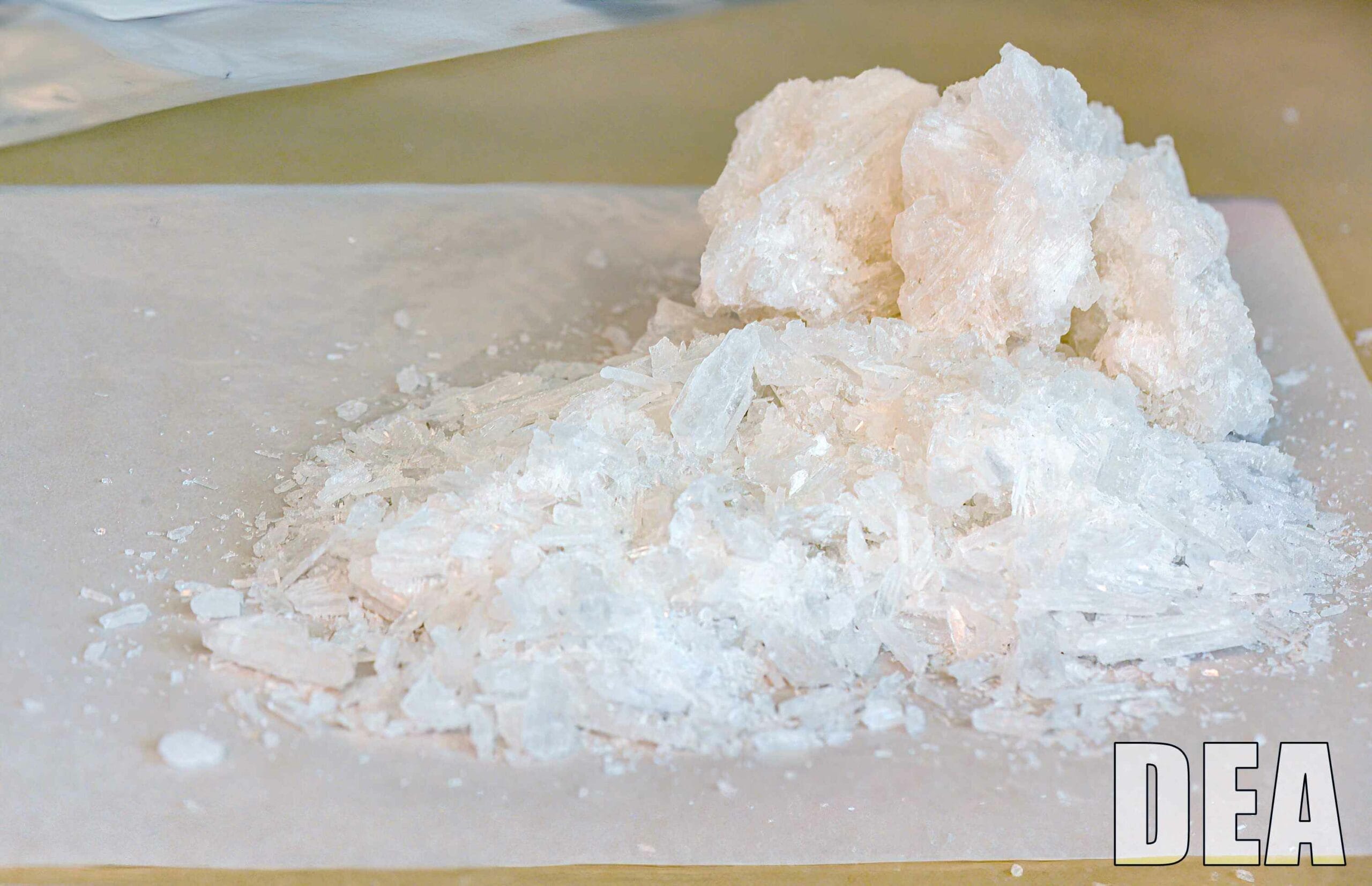
Once suspicion arises, one can perform tests to confirm the presence of methamphetamine residue. Methods for these tests include professional swab sampling and post-cleanup retesting.
Professional swab sampling is the gold standard for meth residue testing. It involves collecting samples of surfaces within the property, analyzing them in a lab, and then calculating the levels of contamination. For those who want to take a preliminary step themselves, there are DIY test kits available, but these might not provide the level of accuracy and detail needed to make informed decisions regarding cleanup efforts.

The legal landscape surrounding meth lab cleanup is complex and varies from state to state. Understanding the regulations and guidelines is vital for homeowners and property managers to stay compliant.
State and federal environmental agencies have set regulations and guidelines to standardize the cleanup process. These include acceptable contamination levels, proper disposal of hazardous waste, and decontamination methods.
Learn more about the legal considerations of cleaning up a former meth lab: County of San Diego: Meth Contaminated Property
In many states, specific laws require sellers to disclose whether they have used a property as a meth lab. Failing to disclose this information can lead to severe legal consequences, especially if contamination harms the health of new occupants. Property sellers should be familiar with the disclosure requirements in their area and make every effort to obtain and share any relevant information with potential buyers.

REALTORS: Hazards & Disclosures: Meth Labs
Exposure to methamphetamine residue can cause a range of health issues, from skin and eye irritation to respiratory problems, and over time, more serious long-term effects, including damage to the central nervous system.
Professional remediation actively ensures the safety and well-being of occupants, providing a safe living or working environment when confirming contamination.
The remediation process typically involves the following steps:
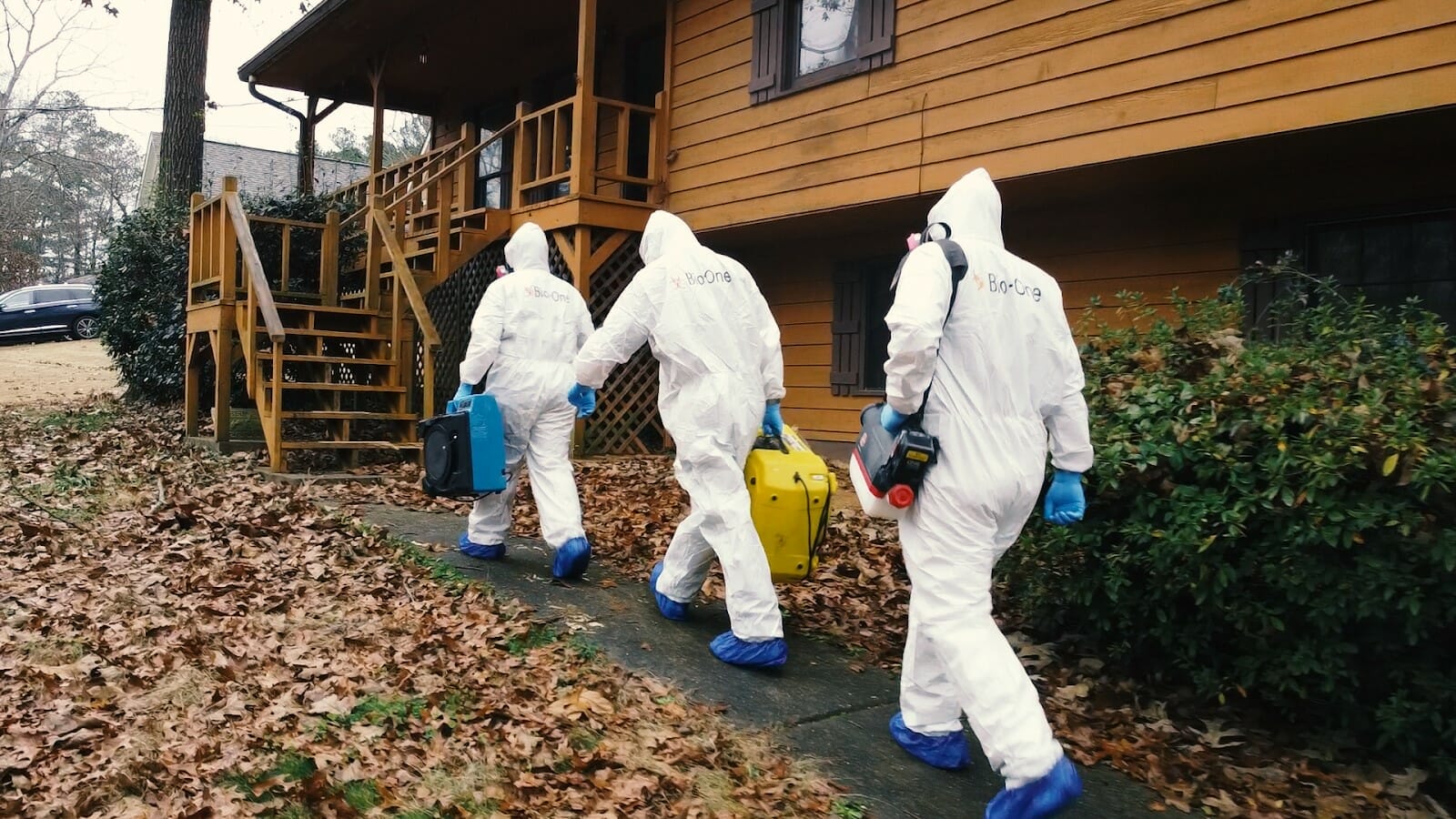
For those who need assistance with cleaning up a former meth lab, Bio-One of Chula Vista is a trusted provider of hazardous waste cleanup services. Our team has the expertise and experience to handle the most challenging cleanup jobs with compassion, discretion, and professionalism. Safety should always come first in these scenarios, and Bio-One of Chula Vista is ready to assist with every step.
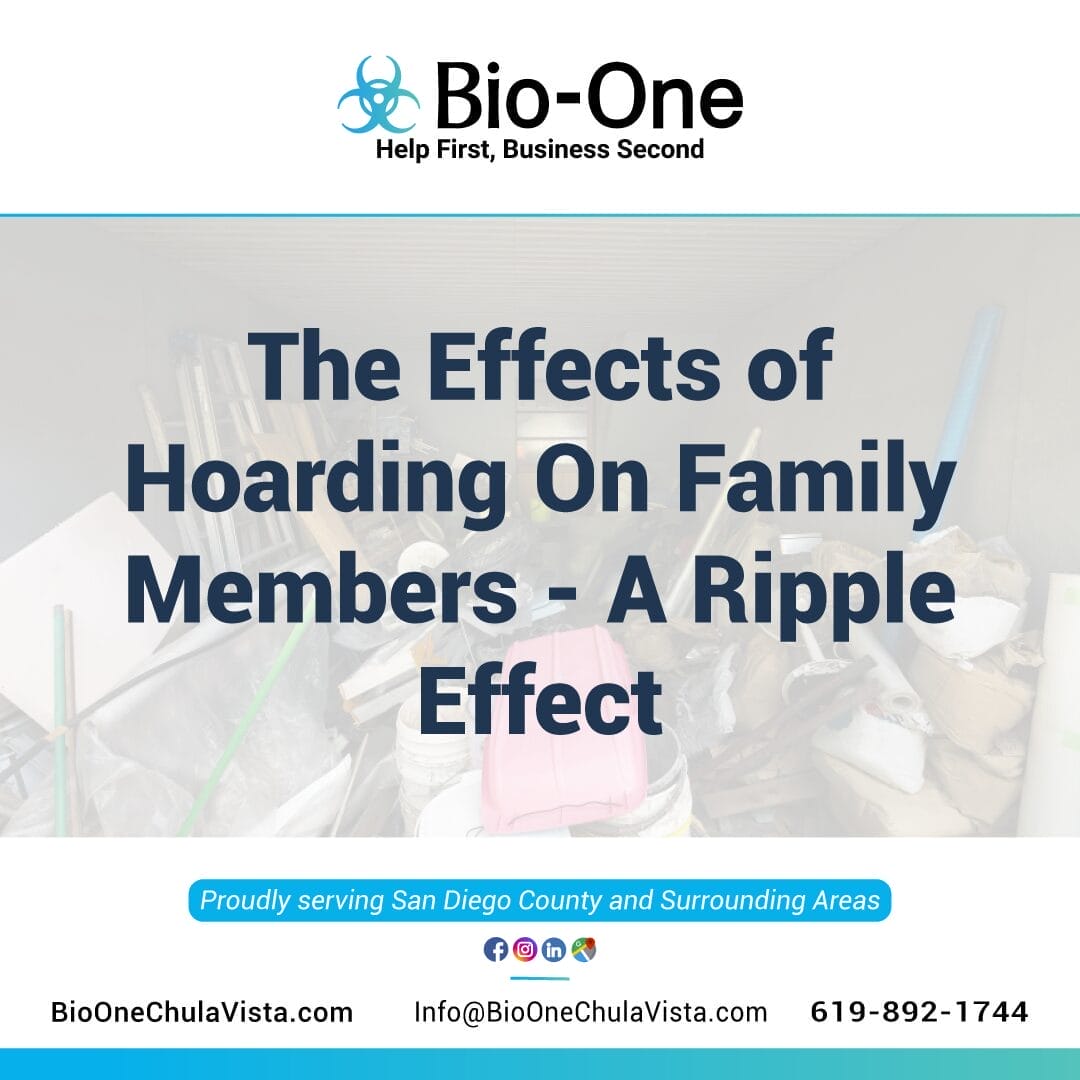
Hoarding is a complex disorder that has serious and far-reaching consequences for the individual and those around them. While the public may view hoarding as a quirky or eccentric behavior, the reality is that hoarding can be dangerous, even life-threatening. Not only does hoarding put the individual at risk, but it can also impact the well-being of family members and loved ones. In this blog post, we’ll explore the effects of hoarding on family members and how the ripple effect can spread far beyond the home of the hoarder.
Disclaimer: The intention of this blog post is purely educational, and aimed at creating awareness around the issue of hoarding and its far-reaching effects. We are a hoarding cleanup company and while we have considerable experience dealing with the physical aspects of hoarding, we are not mental health professionals. However, we do have the resources to connect individuals and their families with the appropriate professionals who can provide the necessary mental health support and treatment for hoarding. Our goal is to serve as a link between the problem and the solution, helping affected families navigate this complex and challenging disorder.
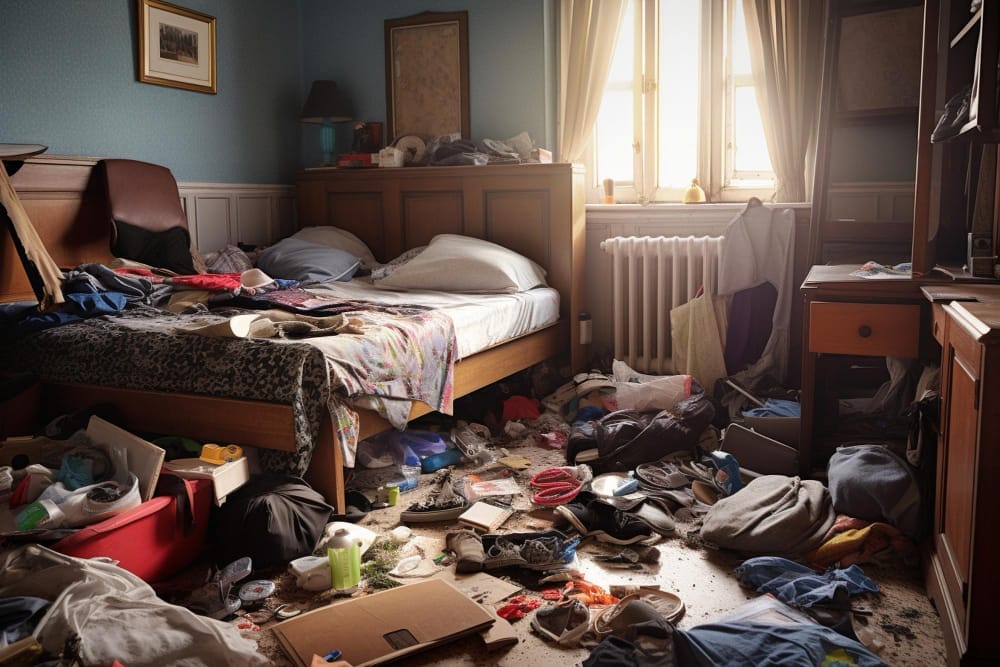
Hoarding often creates a breeding ground for pests, and living within stacked clutter can lead to significant fire hazards. For family members who live with a hoarder, these risks can cause serious damage to their physical health. Clutter can obstruct paths, making it easy to trip and fall, and can also increase the likelihood of mold and mildew growth. Even the lack of proper ventilation can cause respiratory issues. These hazards are further compounded when the hoarder resists efforts to clear the clutter from the home.
The mental health impacts of hoarding are particularly difficult for family members. Watching a loved one struggle with hoarding can cause feelings of helplessness and shame. Often, family members are unsure how to help their loved one and can become distressed in turn. In extreme cases, caregivers of hoarders have reported anxiety, depression, and even post-traumatic stress disorder.
Family members need to seek support and resources for themselves as well, to cope with the emotional toll of hoarding.

For the family members of hoarders, dealing with the financial consequences of hoarding can be a significant burden. Hoarding can lead to higher utility bills (if there are electric issues or heating/cooling problems), pest control costs, and even health problems that need professional care. In severe cases, rent or mortgages may go unpaid, and the home could be subject to eviction. These financial consequences can ripple out to family members, creating debt and considerable stress.

Hoarding can create significant strains on relationships, particularly if other family members are living in the same home. For example, a hoarder may refuse to allow anyone to touch their possessions while family members feel frustrated by the clutter and inhibited in their own living spaces. The tension can cause resentment and result in conflicts. Relationships between hoarders and family members may become difficult to maintain, if not severed completely.
If you are a family member living with a hoarder, it is important to seek help and support. There are many resources available, including support groups, therapy options, and education programs specifically geared toward family members of hoarders. These resources can provide you with the tools and coping mechanisms needed to navigate this difficult disorder and maintain your own mental and physical well-being.
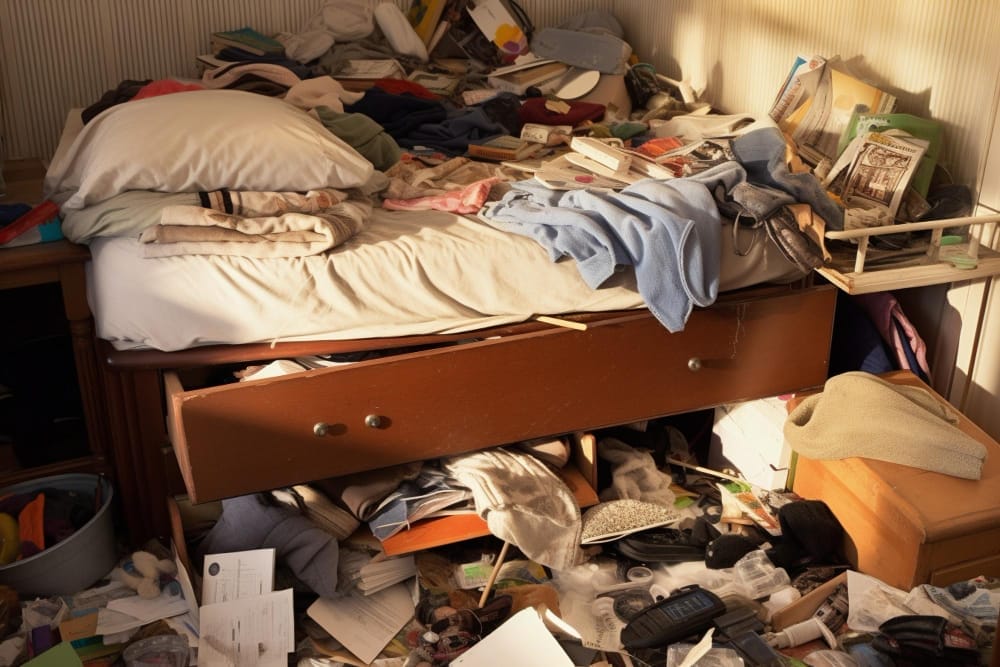
The ripple effect of hoarding doesn't stop with the hoarder. It impacts the entire family, causing physical health risks, mental health consequences, financial strain, and strained relationships. Luckily, there is hope. Hoarding Disorder can be treated through intensive therapy and professional cleaning services to create a cleaner and safer living environment. The first step in tackling hoarding is recognizing the problem and seeking professional assistance.
Complementarily, Bio-One of Chula Vista offers hoarding cleanup services to help families in need. Our team is trained to handle sensitive situations with care and respect, while also utilizing proper safety measures to ensure the health and well-being of everyone involved. Let us help you restore peace and harmony in your home by contacting us today!

We all know that first impressions count and this is especially true when it comes to selling your property. With so much competition on the market, you need to make sure your home stands out from the rest. One of the most important things you can do to achieve this is to clean your house for sale. But where do you start? How do you ensure that your home looks its best for potential buyers? In this blog, we'll provide you with expert tips for cleaning your house for sale, considering all possible scenarios.
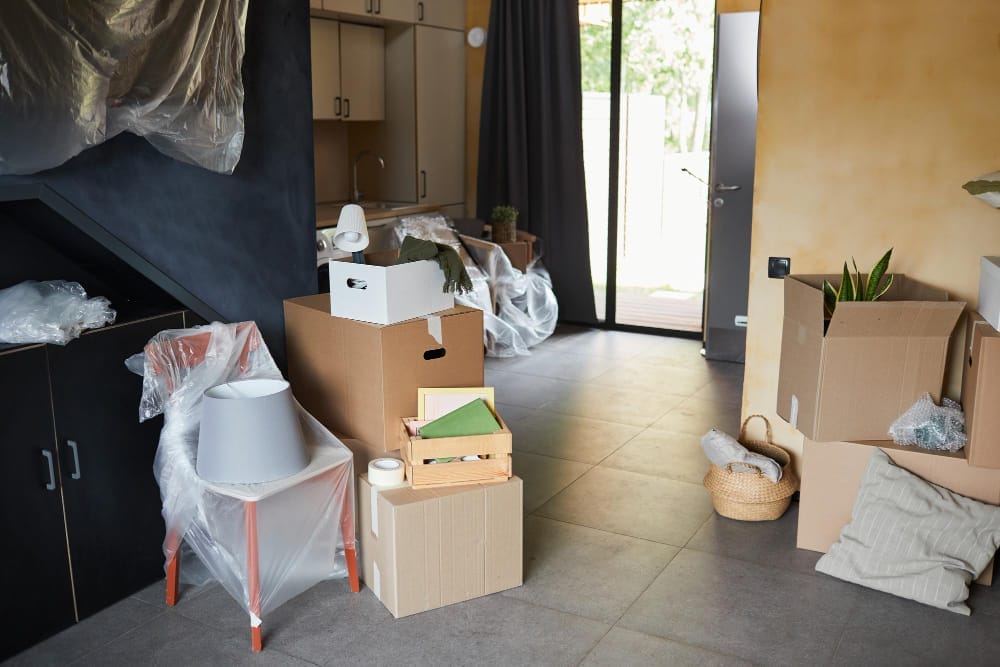
The first step in cleaning your house for sale is to declutter and organize your living spaces. This means removing any unnecessary items, storing away bulky furniture, and organizing your personal belongings. Buyers want to see your home at its best, so make sure to remove any clutter and store away any personal items. You want to create a clean and spacious environment where buyers can envision themselves living.
As for what items to keep during a showhome, keep a few decorative items and furniture pieces to make the space feel lived-in and inviting. However, avoid having too many personal items on display as this can make it difficult for buyers to imagine themselves in the space.

Once you've decluttered and organized the property, it's time to start deep cleaning. This means dusting, scrubbing, and polishing every surface in the house, including floors, countertops, and appliances. If you're short on time or find deep cleaning overwhelming, consider hiring a professional cleaning service to help you out.
A deep clean will not only make your home look pristine but will also help eliminate any odors or allergens that could turn off potential buyers. Speaking of odors, this is one of the most common challenges and questions when it comes to cleaning a house for sale. Here are some tips for removing stubborn odors from any house or property:
We cover it all in our blog post: 5 Easy Ways to Remove Unwanted Odors from Your Home. Be sure to give it a look!
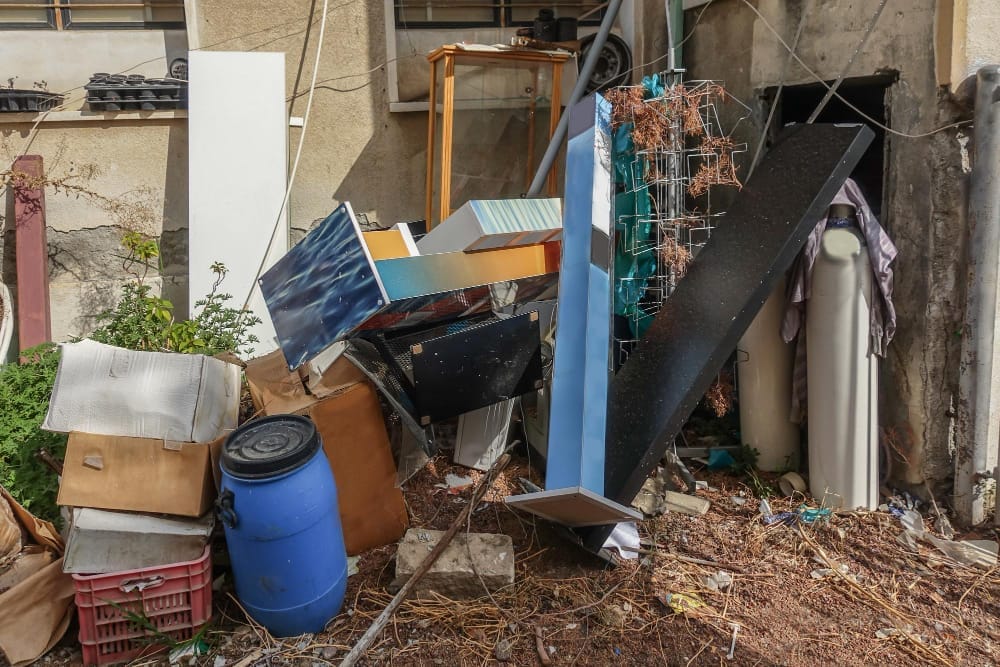
When it comes to cleaning your house for sale, it's important not to neglect the outside of your property. This means cleaning your windows, siding, and gutters, and ensuring that your lawn and landscaping are well-maintained. The outside of your home is the first thing buyers see, so make sure it looks its best!
In addition to cleaning your house, it's important to take care of any repairs that need to be made. This means fixing any leaky faucets, replacing any burnt-out light bulbs, and patching up any holes in your walls. Small repairs can go a long way in making your home look well-cared for and move-in ready.
Remember that if you need help with restoring your house from mold or water damage, Bio-One of Chula Vista is a Micro-certified mold remediation company!
It’s within your budget, consider hiring a professional stager to help you showcase your home. A professional stager can help you arrange your furniture, artwork, and accessories in a way that maximizes your space and highlights your home's best features. A well-staged home can help sell your property faster and for a higher price.

The process of cleaning your house for sale may seem overwhelming, but by following these expert tips, you'll be well on your way to creating a clean and inviting environment for potential buyers. Remember to declutter and organize your living spaces, deep clean your home, take care of any outside repairs, and consider hiring a professional stager to help you showcase your property.
And if you need assistance with mold or water damage, deep cleaning, hoarding cleanup, biohazard cleanup, or any type of cleaning involving dangerous material/remnants, Bio-One of Chula Vista is here to help. Our certified team is equipped to handle any size project and will work efficiently and effectively to restore your home to its best condition. Contact us today for more information on our services!

Tear gas is a common form of crowd control, used to disperse crowds in riot situations or confrontations between police and protesters. Tear gas is made up of a mixture of chemicals that irritate the eyes, nose, mouth, and skin. When used in enclosed spaces or against crowds, it can have long-lasting effects and even be fatal. Understanding teargas exposure symptoms is vital to taking the appropriate precautions and staying safe.
Remember that tear gas residue can linger for weeks or months after an incident, and you must act quickly if you suspect there is tear gas in your home or workplace!

Symptoms of tear gas exposure can vary, but some common signs include:
Exposure to tear gas can also cause skin irritation and rashes, nausea, vomiting, and headaches. In some cases, the effects can be long-lasting, and exposure can lead to respiratory complications and other serious health problems.
If you suspect you have been exposed to tear gas, it's important to take immediate action to minimize exposure and prevent further damage.
You can learn more by visiting the CDC's website for tear gas exposure and action items.

While the immediate effects of tear gas exposure are typically short-term, there can be long-term effects on respiratory health. Studies have shown that exposure to tear gas can increase the risk of developing or worsening asthma, bronchitis, and other respiratory diseases.
If you experience ongoing symptoms, such as difficulty breathing or persistent coughing, our advice is to seek medical help. Your doctor may recommend further testing to assess any damage to your respiratory system and provide proper treatment.
It's also important to seek medical attention if you have been exposed to tear gas multiple times, as repeated exposure can increase the risk of long-term health complications.

Lingering tear gas poses ongoing health risks for people in the affected area. If you suspect there is tear gas residue in your home or workplace, it's important to take immediate action. Bio-One of Chula Vista provides tear gas cleanup services in San Diego County and can help anyone dealing with the aftermath of a teargas-related event, from victims of tear gas exposure to police and law enforcement officers who need to clean up a scene.

Understanding the nature and five hoarding levels can be instrumental in identifying and addressing this often misunderstood mental health issue. Hoarding is not simply about collecting; it's a mental health disorder that affects millions worldwide. From an outsider's perspective, the distinction between a mild clutter issue and extreme squalor can be misinterpreted or downplayed.
However, each level signifies an escalation in the disorder's impact on daily life, personal relationships, and individual well-being. Let's unpack each level to deepen understanding and reinforce the need for tailored support at every stage.
At this level, hoarding may manifest as a slight disorganization and an initial reluctance to discard items. Individuals with mild clutter may retain unnecessary items with little personal or monetary value, which leads to an accumulation that could be equated to 'a bit of a mess' to an untrained eye.
There might be noticeable tendencies, such as buying multiple items, difficulty deciding what to keep or discard, and mild anxiety when facing waste. However, the living conditions are not officially considered hazardous.

As hoarding progresses, the accumulation of items increases. A greater volume of possessions marks this level, and the individual finds it more challenging to discard anything. There is a notable decrease in living space and a noticeable change in the quality of the living environment.
Living rooms and kitchens may become difficult to navigate, not due to hygiene issues but rather due to overcrowding. The individual might often report the inability to find important documents or items amidst the growing clutter.
While the impact on an individual's daily functionality might be minimal, the warning signs at this stage should not be overlooked. Relationships might be strained, as friends and family can begin to notice the unspoken attachment to belongings overtaking the person's ability to comfortably live in their home.
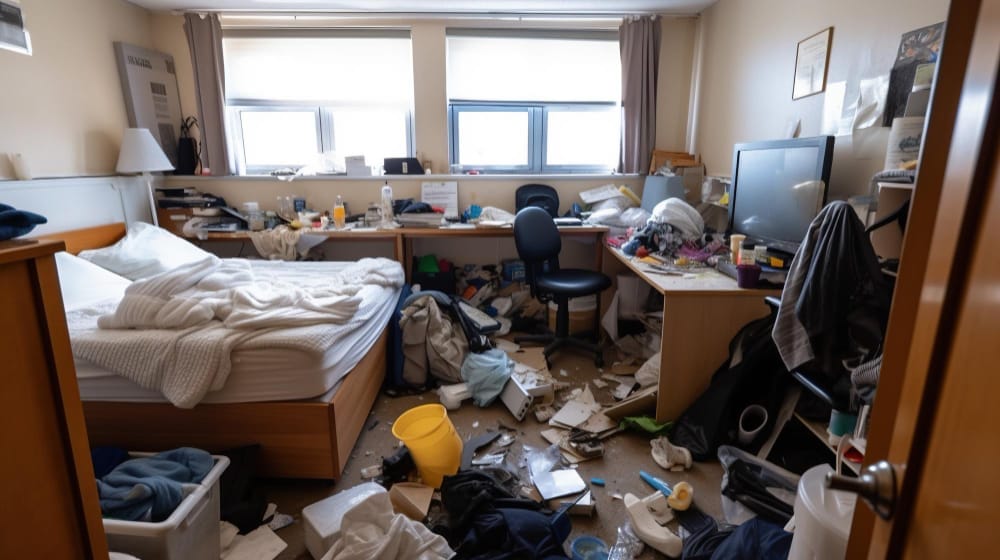
At Level 3, hoarding starts to pose a serious threat to the individual's health and safety within the home. The accumulation has now crossed into a significant problem that impairs the functional living areas.
Key areas of the house (bedroom, bathroom, or kitchen) become so filled with items that they are no longer functional. This might signify the beginning of isolation, as socializing can become complicated with personal spaces in disarray or non-accessible.
This clutter can lead to unhygienic conditions, attracting pests and creating a risk for illnesses. Furthermore, there may be risks of tripping, falling, or other physical injuries due to the encroachment on living spaces.
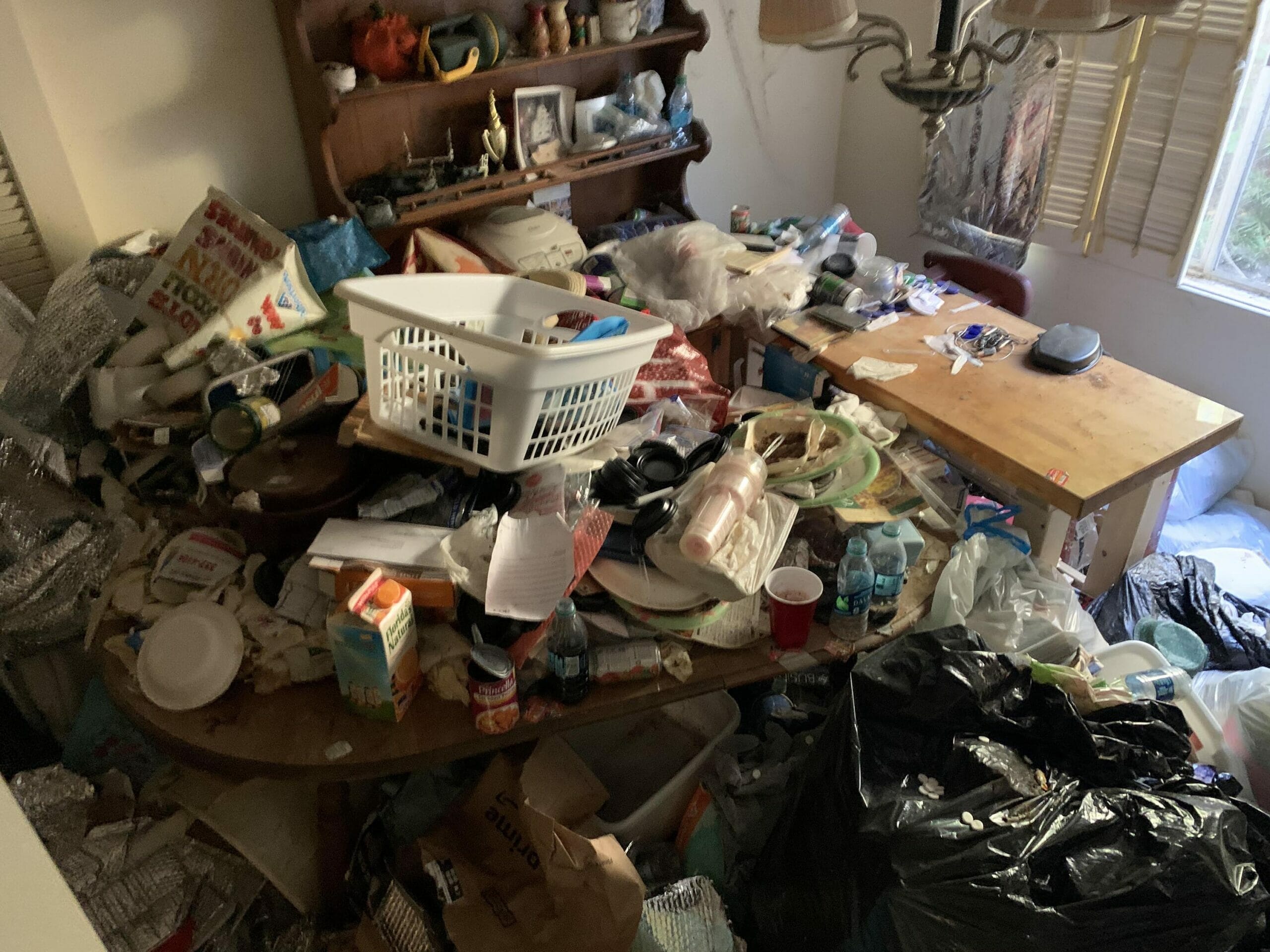
Characterized by extreme accumulation that makes the living space non-functional, Level 4 hoarding now introduces risk factors that extend beyond the individual's home. Structural damage can occur, making the property increasingly vulnerable to fire hazards and other oncoming dangers.
The act of discarding becomes a nearly insurmountable challenge, and the individual may exhibit signs of profound distress when faced with the proposition of removing items, even those of clear zero value.
In many cases, piled-up belongings can compromise the integrity of floors and walls. This amplifies the risk of injuries and potential property loss in fire or other emergencies, as escape routes and visibility might be severely limited.
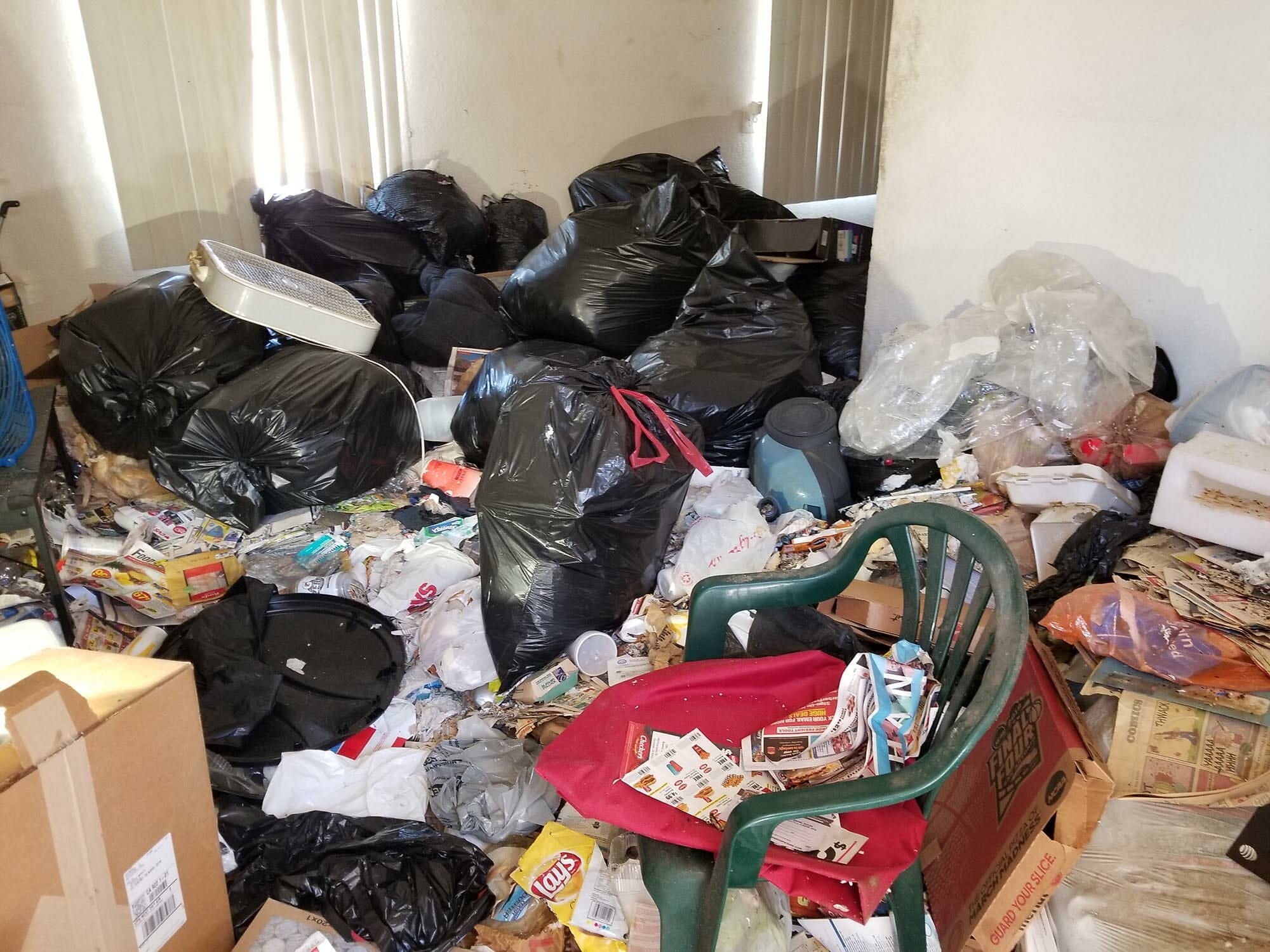
The most severe form of hoarding, Level 5, indicates that the living conditions are now dangerous, posing immediate health risks for the individual and possible legal repercussions due to city ordinance violations.
The living space is now virtually inaccessible, with pathways carved through towering stacks of items to provide a semblance of access. Basic living requirements such as eating and sleeping become challenging tasks.
With extreme squalor, the risk of contracting endotoxin-related illnesses increases drastically. There are also serious concerns about the structural integrity of the building, putting both the hoarder and any visitors at significant risk.

Hoarding is not static; it can progress through various intensity levels, each one bringing with it new challenges and risks. Recognizing these stages early can lead to effective intervention plans that help individuals cope with their condition.
Mental health professionals, in collaboration with family and community support systems, play a critical role in treatment and management. Health professionals can tailor interventions like cognitive-behavioral therapy and support groups to fit the specific needs and hoarding levels of each individual.
For many hoarders and their loved ones, the thought of addressing the accumulated items can be as overwhelming as the hoard itself. Trust in a professional hoarding cleanup service like Bio-One of Chula Vista is the first step towards creating a safe and livable environment. Operating discreetly and compassionately, Bio-One understands the sensitivity of the situation and supports hoarders and their families in managing this challenging condition.
As we continue to raise awareness around the five hoarding levels, we pave the way for a more compassionate response to this often-stigmatized condition. Call today and get immediate help.

Blood stains are a notorious ordeal to deal with. They can potentially strike fear into even the most seasoned of homekeepers. Whether it's a small cut that leaves a drop on your favorite shirt or a more significant injury, knowing how to tackle these stains can help preserve your possessions. In this article, our biohazard remediation team gathered some pro tips on how to remove blood stains effectively.
Before diving into the methods of removing blood stains, it's essential to understand why these stains are challenging in the first place. Blood contains a protein called hemoglobin, which gives it its red color. When this protein comes into contact with oxygen, it causes a chemical reaction that makes the stain difficult to remove.
Disclaimer: The stain removal techniques and home remedies described in this document are compiled from various reliable online sources. These methods have not been scientifically tested or verified by us, and results may vary. Practice due diligence and caution when applying these techniques, especially on delicate or valuable fabrics. Always conduct a spot test in an inconspicuous area before proceeding with any stain removal process.
Safety is paramount when dealing with blood and cleaning agents. Ensure you work in a well-ventilated area and handle any chemicals with caution. Next, gather the necessary supplies before you begin. You'll generally need:
To successfully remove blood stains, time is of the essence. The longer you wait to treat the stain, the harder it will be to remove. As soon as you notice a blood stain, take action promptly.
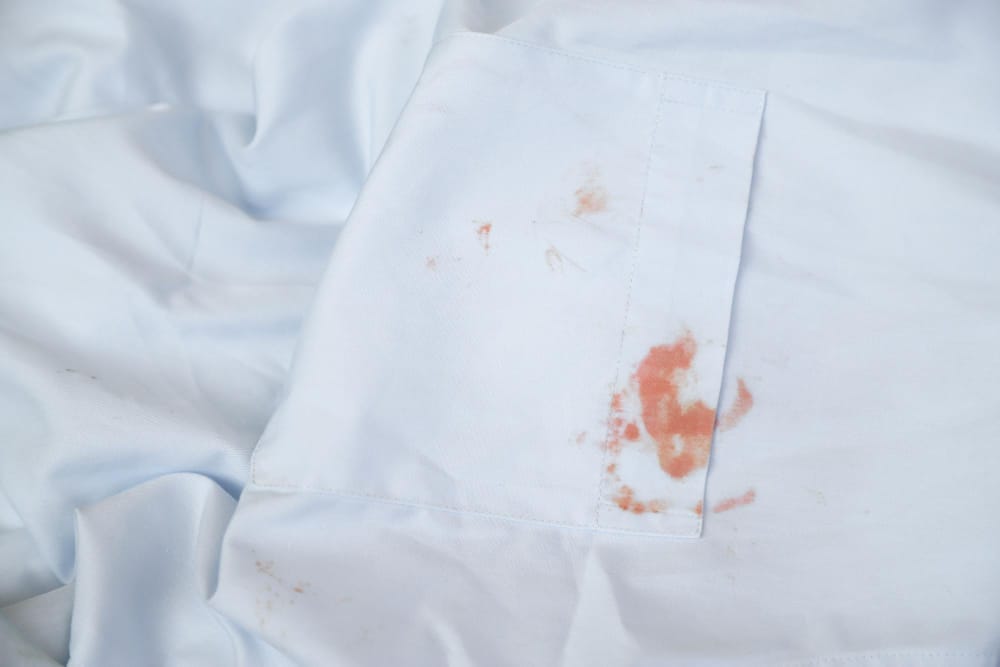
Fresh blood stains are the easiest to remove because the blood hasn't had time to set. Treating the stain quickly is essential to avoid any long-term damage or discoloration.
Dried blood stains can be incredibly tough, but not impossible, to remove. You'll likely need to apply more aggressive treatments and may not get the same flawless results you would with fresh stains.
Now, let’s delve into specific techniques that work wonders against blood stains.
For fresh stains, the immediate steps are critical. Blot the area with a clean cloth to absorb as much blood as possible without pushing the stain further into the fabric.
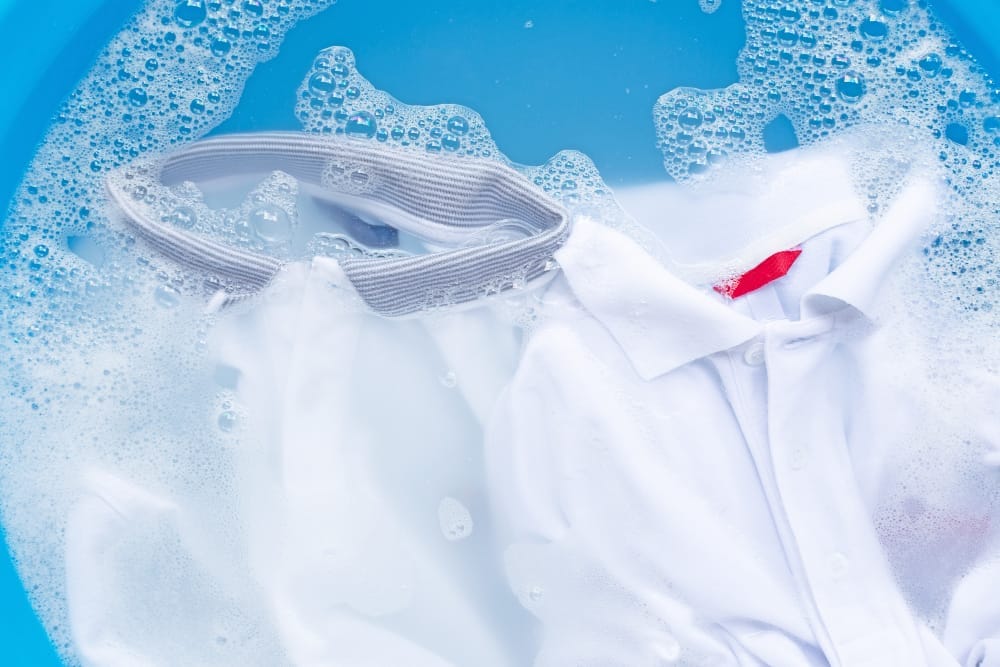
Cold water can help to break down the proteins in the blood, making it easier to remove. Soak the stained area in cold water for at least 30 minutes, or even overnight for a particularly stubborn stain.
Once you've soaked the area, apply your enzyme-based cleaner. These cleaners are specially designed to break down proteins and are incredibly effective against blood stains. Follow the product's instructions, typically by applying the cleaner and leaving it to sit for a recommended time.
For white or color-safe fabrics, hydrogen peroxide is your best friend. Mix one part dishwashing liquid with two parts hydrogen peroxide, and then apply it to the blood stain. Let it sit for a few minutes before rinsing with cold water.
A simple paste made of salt and water can act as a mild abrasive to tackle dried blood stains in fabrics. Just mix salt with a small amount of water to create a paste, apply to the stain, and let it sit for about 30 minutes before rinsing with cold water and laundering as usual.
When all else fails, it may be time to turn to professional cleaning agents. Stain removers designed for tougher stains can give you the edge against even the most challenging blood spots. Always follow the manufacturer’s instructions carefully to avoid damaging the item.
Here are a few dos and don'ts to keep in mind throughout the blood stain removal process.

For those who prefer natural remedies or want to use items they have at home, several alternative methods can be effective against blood stains.
These alternative methods are not proven by science, but some people swear by them. Always spot-test first and use caution on delicate fabrics!
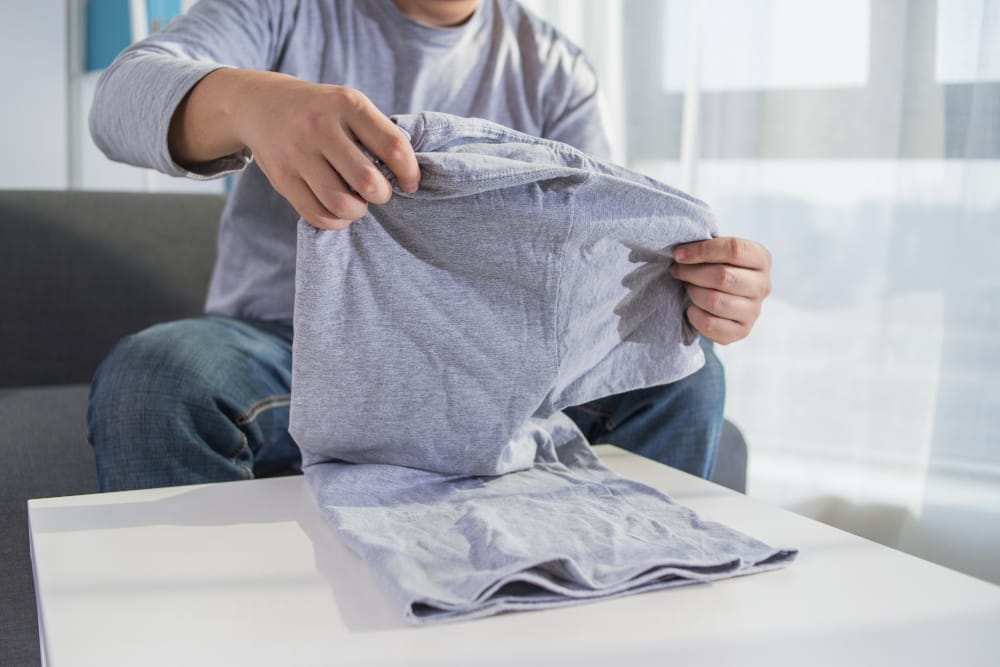
By following these guidelines, you can take the dread out of dealing with blood stains and turn a potentially ruinous situation into a manageable one. It may take a few attempts to completely rid your fabrics of these stains, but with each try, you'll get better at the battle. The sooner you act, the better your chances of complete removal.

Sewage backups are an unpleasant reality of home maintenance that can lead to significant health hazards and property damage. Understanding the common causes of sewage backups can be the first step in preventing future incidents. Let's dive into the common culprits behind these messy malfunctions and what you can do to safeguard your home.
The idyllic shade provided by a tree outside your home might come at a cost if its roots invade your sewer line. As tree roots grow, they seek out sources of water, which can lead them to small cracks or loose joints in your underground plumbing. This infiltration not only blocks the flow of waste but can cause further damage as the roots continue to grow.
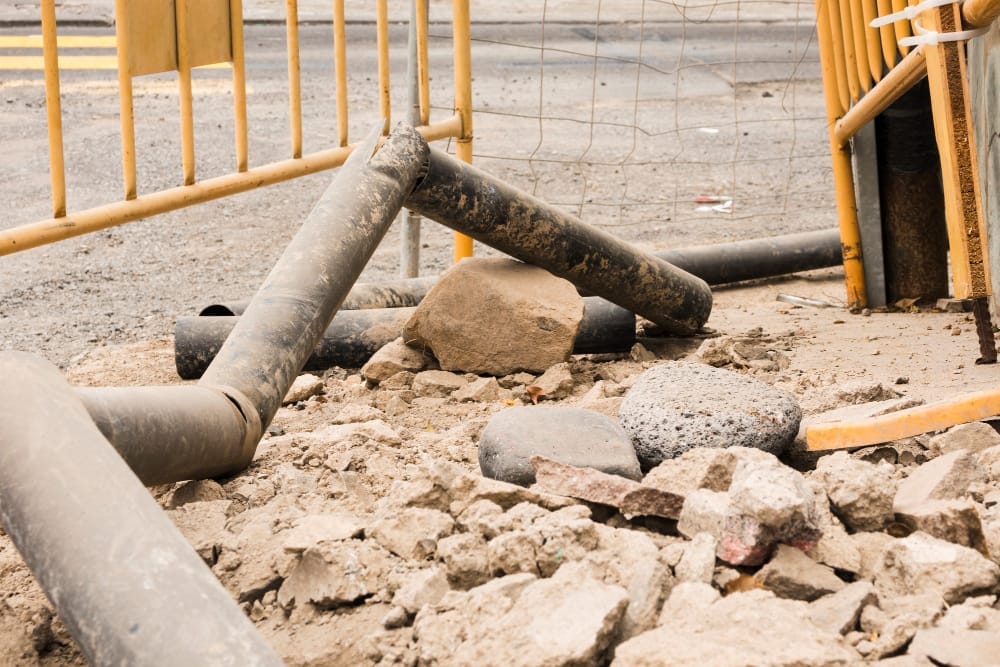
Every part of a home has a life expectancy, including its plumbing. Over time, materials deteriorate, leading to sagging lines, joint dislocations, and complete collapses. If your property is older or if you've been neglecting inspections and maintenance, those aged pipes could be the weak link in your sewage system, waiting to give way under pressure.
It's a common misconception that it's safe to dispose of grease and oil by washing them down the drain. In reality, these substances solidify and can form stubborn blockages in the pipes when they cool. Over time, these blockages grow, eventually stopping the flow of water and waste entirely.
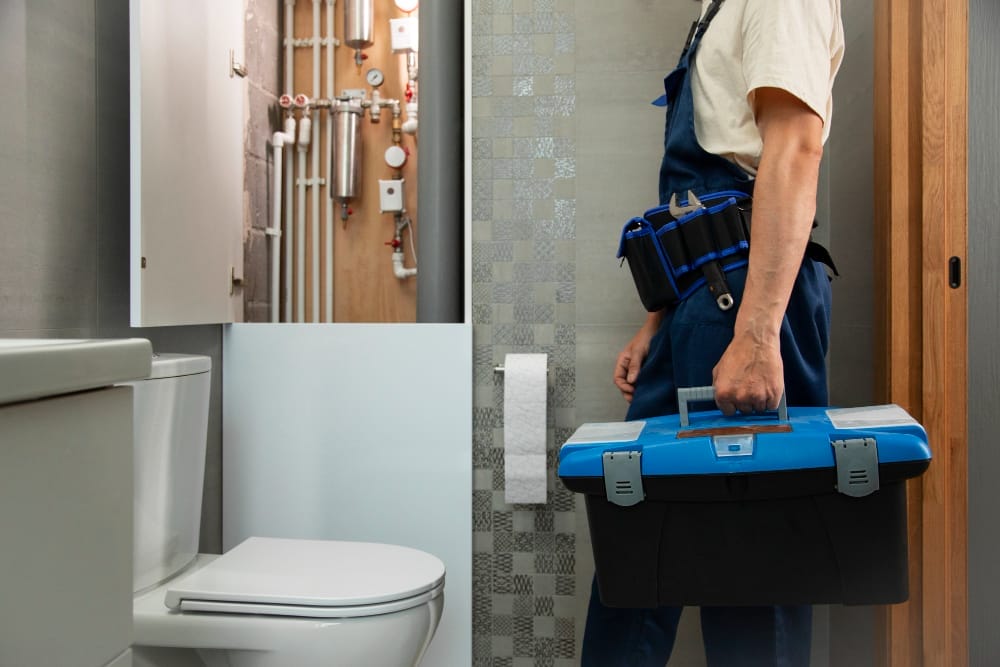
We've all heard the warnings, but sometimes convenience wins over common sense. Items like flushable wipes, hygiene products, and even paper towels don't disintegrate like toilet paper, making them more likely to contribute to a sewage backup.
Nature can be as much to blame as our homes and habits. Intense rainfall can overwhelm your local sewer system, causing a backup that might not be preventable from within your property. In these cases, the focus shifts to managing and minimizing the damage rather than preventing it.
Professional inspections can catch issues before they become disasters. Making routine checks part of your maintenance schedule can save you a lot of money in the long run. And remember, prevention is more cost-effective than reaction.

Educate everyone in your home about what is and isn't safe to put down the drain. Implement practices in your household that prevent the introduction of non-degradable materials and grease to your plumbing system.
A backwater valve is a fixture that prevents sewage from flowing back into your home. It's a simple but crucial addition to your plumbing system, especially if you live in an area prone to heavy rain or flooding.
Knowledge is power, and when it comes to preventing sewage backups, widespread understanding and action are key. Regular newsletters, pamphlets, or even informational sessions can ensure that everyone knows their role in keeping the sewage system running smoothly.
/
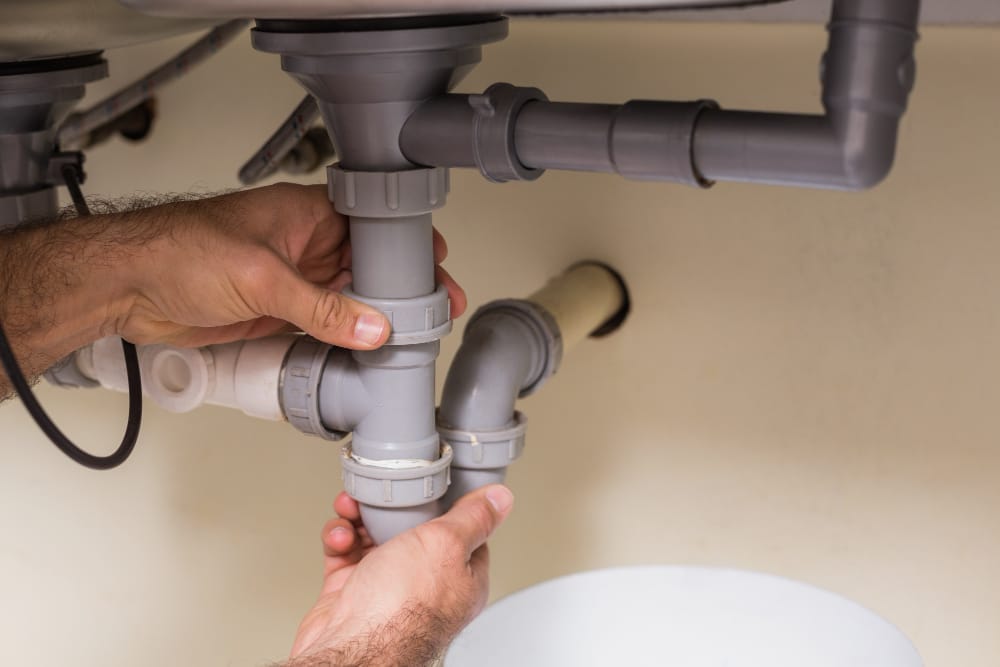
If your sinks, showers, or tubs are taking longer to drain, it's a sign that there's a blockage somewhere in the line.
The smell of sewage in or around your home is never a good sign. It can indicate both blockages and potential damage to your sewer line.
It's not a coincidence if several of your drains are clogged at once. This could be a warning that there's a more serious problem further down the line.
The most alarming sign of all, sewage backing up into any of your lower-level fixtures, indicates a major issue that needs immediate attention.
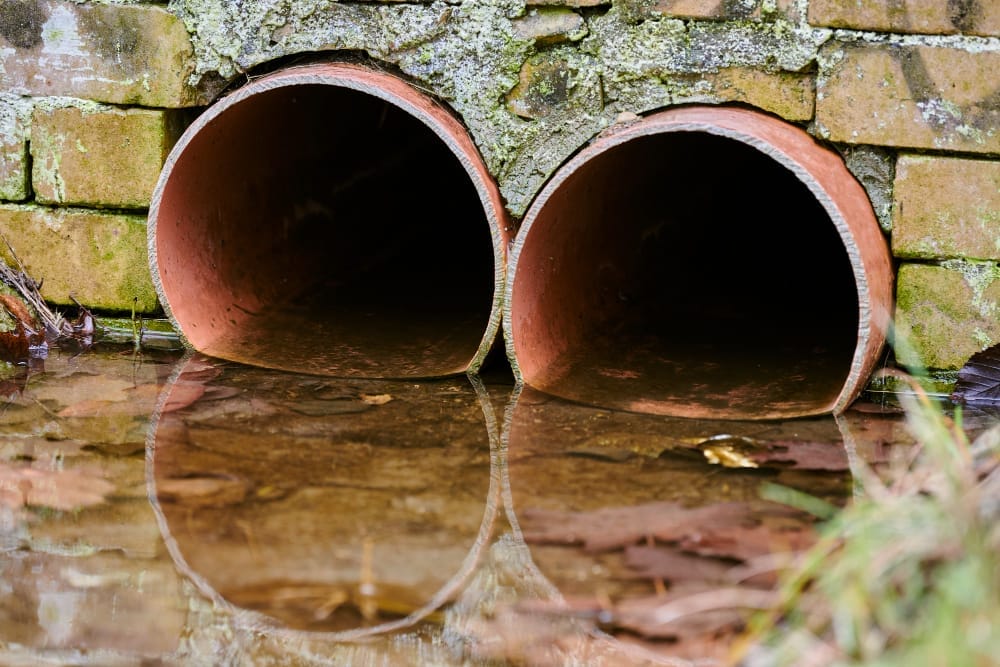
Understanding what to do during a sewage backup can mean the difference between a minor inconvenience and a major cleanup. Upon a sewage backup emergency, you should:
Never enter a room with standing sewage water unless the electricity has been turned off!
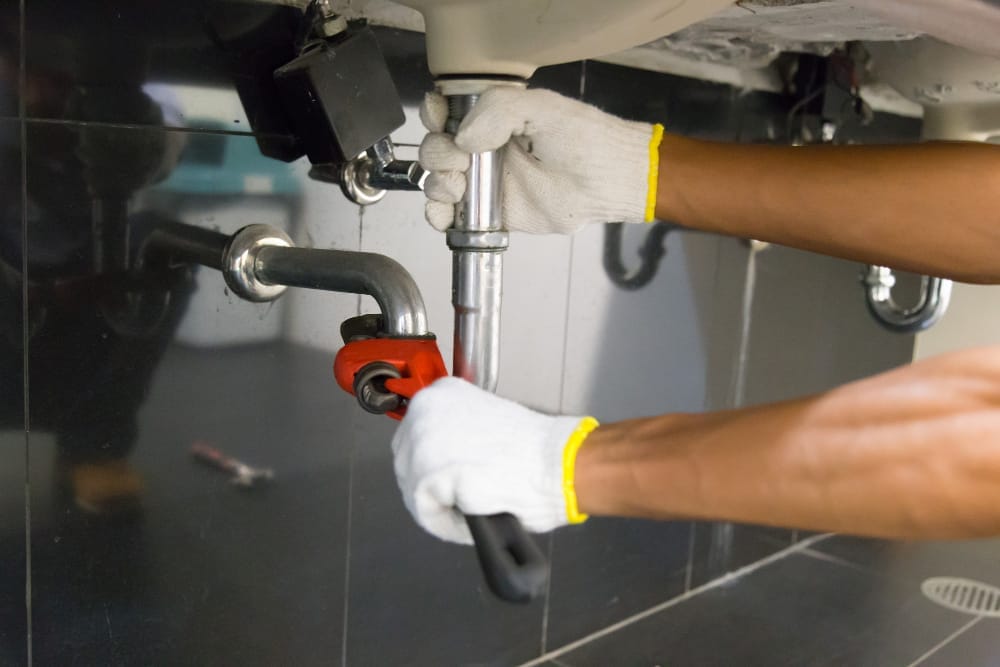
While it's tempting to try to fix a sewage backup yourself, it's always best to leave it to the professionals. A licensed plumber will have the expertise and equipment to properly diagnose and handle the issue, reducing the potential for further damage or health hazards.
A sewage backup is a serious event that requires immediate attention. Remember, regular maintenance, informed practices, and preparedness are your best defenses against the mess and stress of sewage backups.
But if you do experience a backup, Bio-One of Chula Vista is here to help. Our team of experienced professionals can handle sewage cleanup quickly and efficiently, restoring your home and peace of mind in no time. Contact us today for more information about our services or to schedule an appointment.

Ever walked into the home of an enthusiastic antique collector, or perhaps gazed upon the meticulously organized shelves of a stamp aficionado, and wondered where the line between a hobby and a mental health condition is drawn? While collecting is a beloved pastime for many, it can sometimes tip into the realm of hoarding, which is recognized as a disorder. This blog post delves into the nuances of collecting vs. hoarding, helping you understand when a simple pastime might require professional intervention.
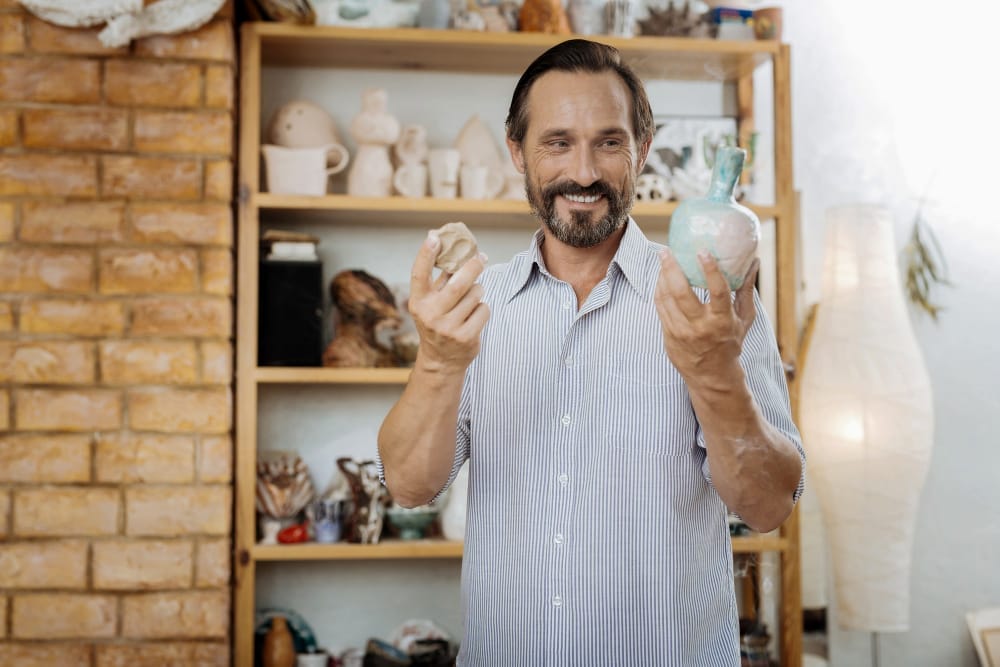
For many, collecting stands as a time-honored hobby, bonding people over shared interests, preserving history, and even adding value to a person's life through the cultivation of a specialized knowledge base. At its core, collecting is an organized and curated activity; items are often displayed purposefully and there is a sense of pride and satisfaction that comes from growing a collection.
Collecting is all about the thrill of the hunt and the appreciation for the objects collected. It’s about making connections, often through social interaction or trading, and can be an outlet for creativity and self-expression. A collector may have a deep fascination for their items and derive joy from engaging with them, yet they can also step away from their collection without undue stress or anxiety.
In contrast to collecting, hoarding is a mental health disorder characterized by an inability to discard items. This goes beyond simply having a cluttered space and can lead to significant distress and impairment in various areas of life, including work, relationships, and even basic health and safety. Hoarding is often a manifestation of anxiety and cognitive difficulties that result in attachment to objects most people would consider worthless or trash.
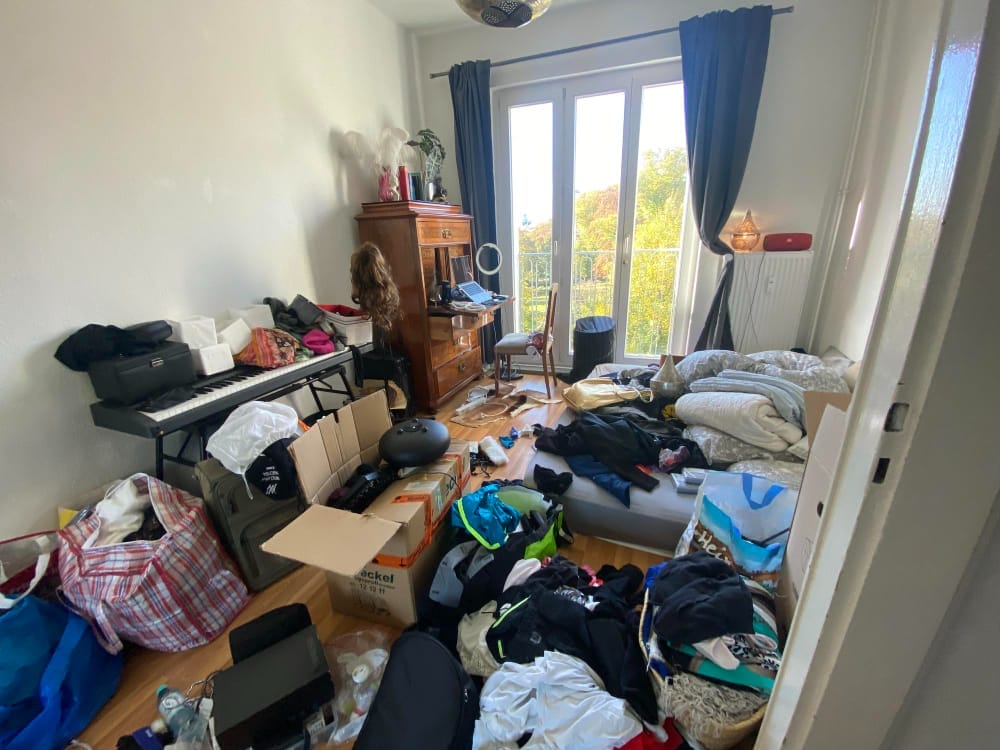
Hoarding behavior is typified by the accumulation of large quantities of items that often have little to no value. Hoarders may experience severe distress at the thought of parting with their possessions and may believe that they will need these items at some point or that the items have an inherent value that others cannot see. Their living spaces become increasingly cluttered, which can lead to isolation and difficulty maintaining a home.
One of the primary distinctions between collecting vs. hoarding is the individual's perception of their items. A collector values each item in their collection and curates it with purpose, often for future enjoyment or investment value. In contrast, a hoarder's collection is often chaotic, non-discerning, and may include a large number of items that most would consider trash.
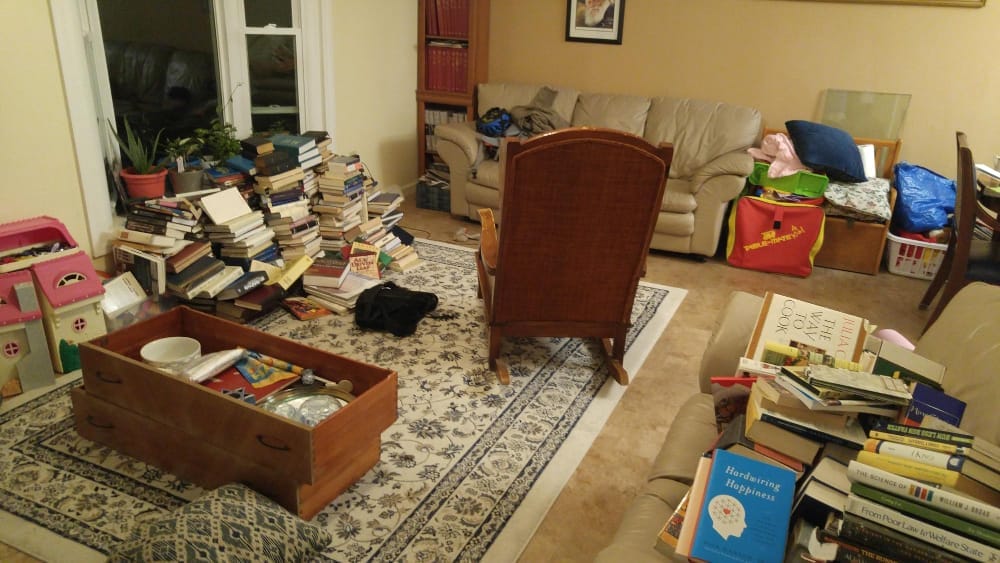
Another crucial difference is the level of functionality within the living space. While a collector may have a dedicated area for their items that is separate from their daily life, a hoarder's living environment becomes progressively more dysfunctional as their possessions encroach on their ability to carry out normal daily activities.
Hoarding can go unnoticed for years, as individuals may be ashamed or unaware that their behavior is symptomatic of a larger problem. Some common signs to look out for include:

Hoarding Disorder can have a significant impact on an individual's mental health. These impacts can include severe anxiety, depression, feelings of shame and inadequacy, and a profound sense of loneliness and social isolation. The cluttered living environment can also lead to further cognitive and sensory overload, exacerbating the symptoms of the disorder.
RELATED: Hoarding and Health - How Much has Hoarding Affected You?
Hoarding affects the individual and also strains relationships and degrades the quality of life for family members and loved ones. Homes become battlegrounds for control, and families struggle to understand the hoarder’s behavior, often feeling helpless to intervene.
If you suspect you or someone you care about may be struggling with hoarding, it's important to encourage professional help. Treatment for Hoarding Disorder often involves therapy and support groups, as well as cognitive-behavioral strategies to address the patterns of thought and behavior underlying the hoarding. Hoarding is a manageable condition. Just make sure to engage with them in open and non-judgmental communication.
Understanding the distinction between collecting vs. hoarding is more than an academic exercise. It’s an important step in recognizing when a pastime crosses the line into a disorder, and when to seek help or extend support. Remember, seeking help is not an admission of failure; it’s a courageous step toward a healthier life.

Remember, hoarding often requires professional intervention, and services like those offered by Bio-One of Chula Vista can make a significant impact. For help, reach out to specialized organizations equipped to support hoarding cases (take a look at our Guide Section to learn more), and remember, patience and understanding are key components when navigating through the complexities of hoarding.

Drug residues pose serious health risks, especially to children, pets, and individuals with compromised immune systems. Understanding the threat is the first step in safeguarding your home and health. In this blog, we'll dive into the less-discussed dangers of cleaning drug residue and how our remediation team at Bio-One of Chula Vista can assist in restoring homes and businesses from any type of drug remnants lingering in the environment!
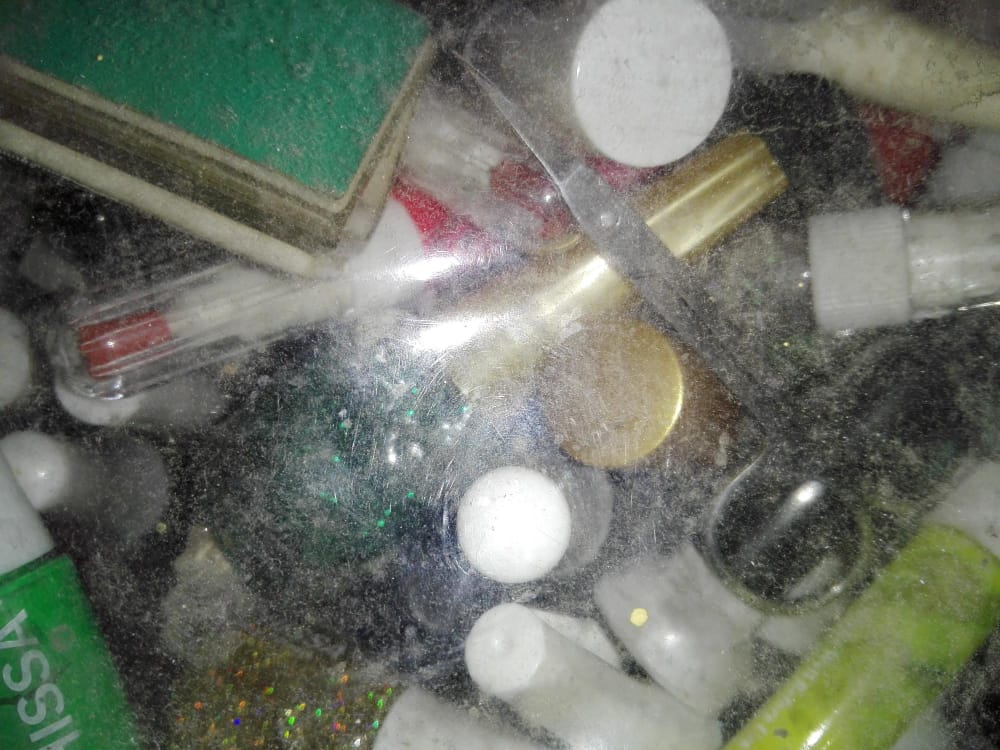
Imagine moving into a new home, only to discover that it harbors the remnants of a previous tenant's illicit activities. Drug residues left on surfaces can linger for months or even years, presenting a pervasive, invisible threat. This is a common occurrence, yet awareness remains low. Residue can include methamphetamine, fentanyl, cocaine, and more, and typically accumulates on walls, floors, ventilation systems, and personal belongings.
Inhaling or ingesting drug residue through simple activities like touching surfaces, sitting, walking, or playing can lead to a wide range of health problems. For adults, this exposure can result in severe complications that include:
In children, the risks are even greater due to their smaller size and developing immune systems. In fact, exposure to drug residue can have lifelong consequences such as:
Pets are also at risk of exposure to drug residue, which can cause similar health issues as humans. Additionally, they may be more inclined to accidentally ingest residue while exploring or playing in affected areas.
Learn more: Symptoms of Meth Exposure
Detecting the presence of drug residue is challenging, as it often doesn't produce any discernible odors or visible signs. However, some indicators include chronic respiratory issues, unexplained allergy-like symptoms, and unusual chemical odors. Common areas where drug residue may be found include kitchens, bathrooms, and any space where drug use or handling may have occurred.
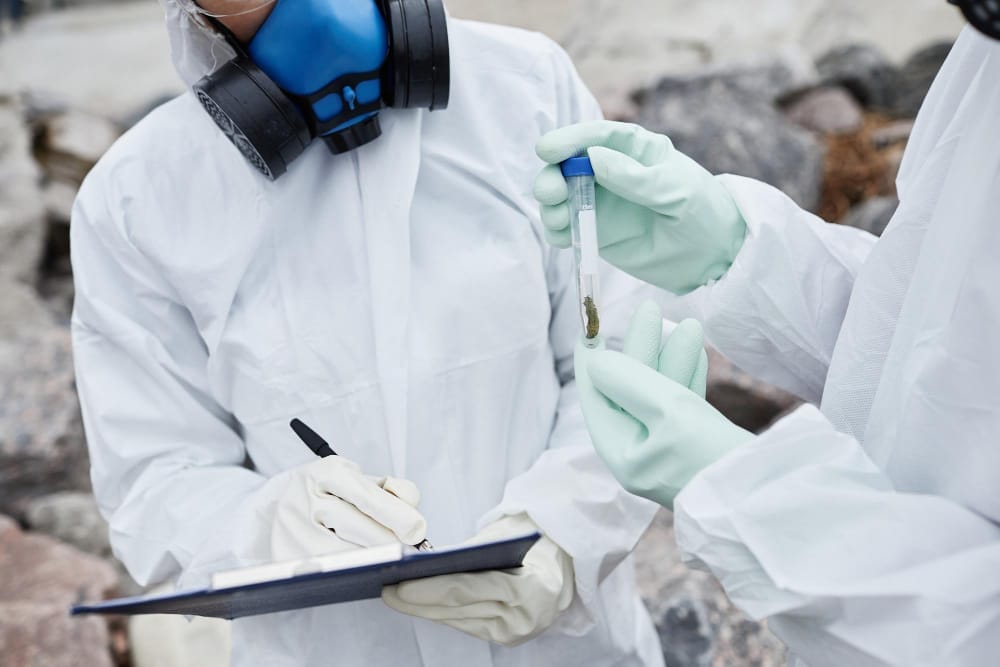
Illegal drug residues come in many forms, with some of the most common including fentanyl, a powerful and extremely dangerous opioid, and methamphetamine, which can leave behind toxic chemicals used in its production. Others include:
The unique hazards of these substances demand specialized cleaning methods to ensure a safe and thorough removal process. Bio-One of Chula Vista can help.
If you suspect your home may contain drug residue, taking safety precautions is of the utmost importance, including using personal protective equipment (PPE) and well-ventilated areas for cleaning. Professional services, equipped to handle hazardous materials, may be the safest choice for comprehensive cleanup.
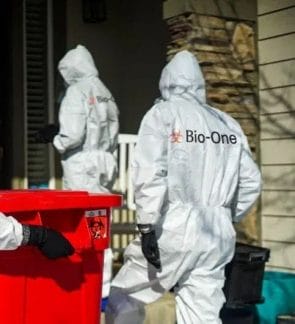
We do NOT recommend DIY cleaning practices, as they can prove dangerous and incomplete. Trust professionals to identify areas of contamination, safely dispose of hazardous materials, and thoroughly clean affected surfaces.
When it comes to cleaning drug residue, a proactive approach to awareness and avoidance can make all the difference. Homeowners and managers should be diligent in regularly assessing for residue, and knowing when to enlist professional help. It's not a problem you can afford to overlook, for the health and safety of all who reside in your home.
For professional drug cleanup services in San Diego County, Bio-One of Chula Vista is ready to help. With their expertise in decontamination and removal, they can ensure your home is free from the health risks associated with drug residue. Contact us today to schedule an assessment.

Hoarding goes far beyond the accumulation of possessions. It is a condition that can have a profound impact on the individual struggling with it, as well as their immediate social circle. This blog post explores hoarding and relationships and provides strategies to navigate the emotional minefield that hoarding often creates within families and friendships.
Before delving into hoarding and relationships, it's important to understand the condition itself. Hoarding is characterized by persistent difficulty discarding or parting with possessions, regardless of their actual value. It can be the result of various psychological factors, such as attachment issues, perfectionism, and risk aversion. The disorder is often associated with obsessive-compulsive disorder (OCD) but is also recognized as a distinct condition.
Those with Hoarding Disorder may feel immense distress at the thought of getting rid of items. As a result, their houses and dwellings become cluttered to the point where they can no longer be used for their intended purposes. This behavior can present serious health and safety risks, as well as legal and financial consequences.

Hoarding can strain friendships by making it challenging for individuals to maintain their side of the relationship. Social events, and the liberty of inviting friends over, are often hindered by the clutter, leading to a gradual withdrawal from social interactions.
Over time, hoarders might find themselves socially isolated, even if they were previously outgoing. This isolation is not only a consequence of the clutter driving others away but can also be self-imposed due to the shame and discomfort hoarders often feel about their living conditions.
Hoarders frequently avoid having people over, which can lead to misunderstandings and hurt feelings. Friends who don't understand the severity of hoarding may interpret these actions as a lack of interest in the friendship, when in reality, the hoarder may be struggling with the condition.
Hoarding can lead to tension and conflicts within families. Non-hoarding family members may feel frustrated, helpless, and resentful about the situation, while the hoarder may perceive efforts to clean or clear out items as an attack.
Communication breakdowns are common in families affected by hoarding. Open and honest discussions about the problem often devolve into arguments, with both sides feeling misunderstood and marginalized.
The financial implications of hoarding can further strain familial relationships, especially if the hoarding leads to unpaid bills, legal fees, or a significant reduction in the value of the property.

People with hoarding disorder often experience profound shame and embarrassment about their homes, which can prevent them from seeking the help and support they need.
Anxiety and depression are frequent companions to Hoarding Disorder. The overwhelming nature of the clutter can cause significant distress and exacerbate existing mental health conditions.
Family members often bear the brunt of the disorder, with guilt and frustration being common byproducts. They may feel guilty for wanting the hoarder to change while also growing increasingly frustrated with the situation.
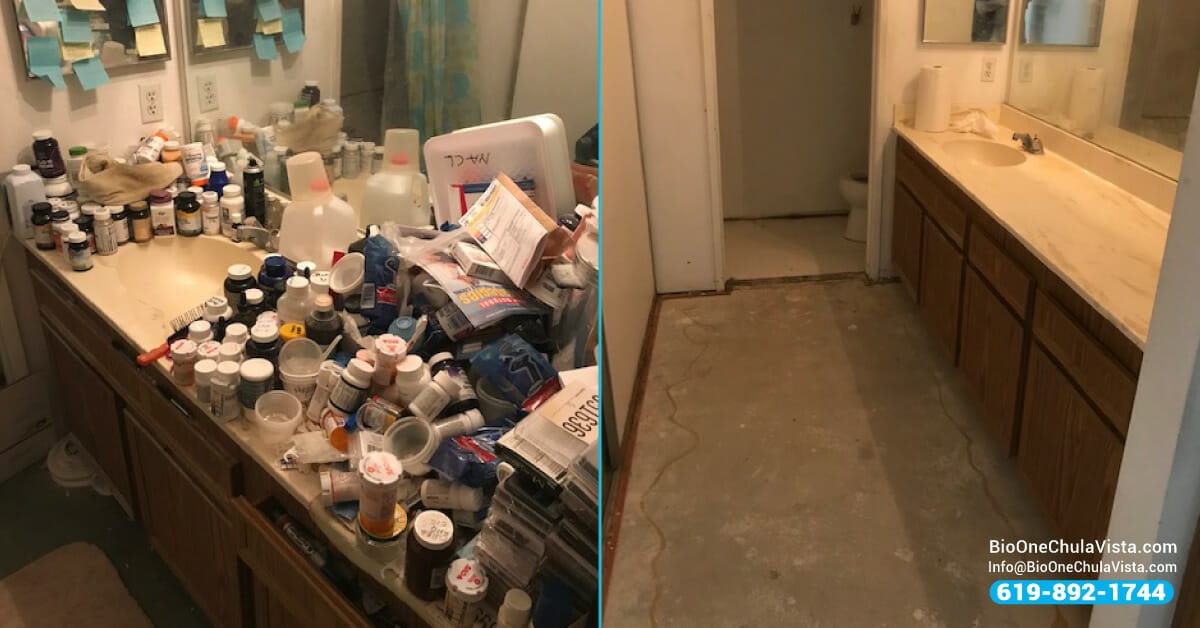
For those struggling with hoarding, or those supporting someone who is, reaching out to a professional hoarding cleanup and remediation service like Bio-One of Chula Vista can be a crucial step. With expertise in handling biohazard situations, our experienced technicians can provide not only physical but emotional support, as we understand the delicate nature and complexity of addressing a Hoarding Disorder. Our compassionate yet discreet approach ensures that the family's dignity and privacy are respected throughout the process.